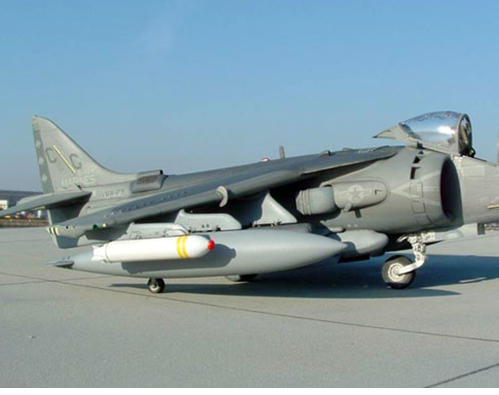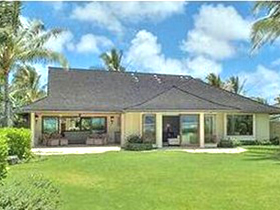

CHICAGO -- With the pull of a lever, 23,000 pounds of thrust slows the forty-seven foot long aircraft to a complete halt over the Lake Michigan shoreline, floating a stones throw away from a crowd boasting more than two million people. For the Marine Corps’ AV-8B Harrier, it’s all in a days work.
This is what beachgoers at Chicago’s 2003 Air and Water Show were able to glimpse when a VMA-231 Harrier ground crew flew up from Marine Corps Air Station Cherry Point to perform.
“It was so cool to see it just hovering there,” exclaimed Chicago Air and Water Show attendee Josh Brown. “Then to watch it go backwards and in a circle, it was amazing! “
With the original design dating back to the late 1950’s, the AV-8A Harrier was finally put into production in 1966 for the British Royal Airforce, then entered into the service with the Marine Corps in the early seventies.
During the Korean War, the Marine Corps was given the task of being the military’s expeditionary fighting force said former Aviation Chief of Staff member Retired Lieutenant General Harry Blot. To make that happen we (the Marine Corps) needed an aircraft that could get into the action right away and still deliver a lot of firepower.
“In 1970, I was sent to England as a test pilot to try out the Harrier and see if it was capable of performing the Marine Corps’ mission” Blot explained. “It had potential. But at the time it needed more thrust and firepower, plus an experienced pilot in order to handle it.”
Most known for its ability to hover and take off and land vertically. The main purpose of this one-man aircraft is to provide close air ground support. But this jet has the capacity for far more.
“Aside from strict air-to-air combat, the Harrier can take care of any situation” described VMA-231 Harrier Pilot Captain Wynn Hodgins. “It can operate in a day or nighttime environment out of restricted spaces, it can deliver pinpoint accuracy with a wide range or ordinance, and it’s excellent for reconnaissance missions.”
Over the years technology has caused the Harrier to evolve three times. The first Harrier was developed in 1971 with the construction of the AV-8A, then the AV-8B was introduced in 1985, and finally the AV-8B II (Plus) was engineered in 1993.
“The difference between these models was the AV-8B had a longer range and wingspan than the AV-8A, and AV-8B was also more powerful. The AV-8B II Plus differed from its predecessors in only one major area,” said VMA-231 Harrier Pilot Captain Kevin Lipski. “It had radar. Before that, pilots had to navigate their aircraft manually or by instructions from the ground.”
In 1985 the first AV-8B Harrier squadron took flight in Yuma, Arizona with Marine Fighter Attack Squadron 513 the “Nightowls,” now known as the “Nightmares.” And after six-years of flight exercises, the AV-8B saw it’s first campaign in 1991 with Operation Desert Storm. Since then, the AV-8B has seen combat in Somalia, Lebanon, Bosnia, plus mostly recently Iraq and Afghanistan.
“I left for Iraq around mid January with VMA-542 on the U-S-S Bataan and returned this past May” said VMA-231 Harrier pilot Major John Sisson. “It was going to be only the second time I had flown in a combat scenario, so I was eager to head out, get the mission accomplished and come home. Even though I was nervous, I knew the aircraft I was flying would be able to handle whatever I needed it to do. Using the Harrier is definitely a good way to take care of business.”
“For me, being a harrier mechanic isn’t really different from any other job. You show up and do what needs to get accomplished. It’s not all fun and games though. You sometimes have to work back-to-back 16-hour days and weekends,” sighed Harrier Mechanic Corporal Brian Zankus. “It’s hard, but it’s what I love to do.”
Today there are eight squadrons throughout the Marine Corps consisting of 16 Harriers per unit. And of those eight, every squadron was involved in Operation Enduring and Iraqi Freedom. Whether it was the entire unit being deployed or sending a 6-plane team to accompany another expeditionary force, each Harrier squadron participated.
Fortunately during both operations, there were no casualties or damage sustained from combat to any of the Harrier aircraft. With each plane valued at 23.7 million dollars, it would cost quite a pretty penny to replace.
“Ever since I was a little kid, I wanted to work on planes. So to be in charge of a Harrier is pretty much a dream come true,” grinned Harrier mechanic Corporal Steven York. “Not very many people get a chance to maintain a 24 million dollar piece of equipment.”
After 30 Years of service, September 30th marked the day for the last Harrier delivered to the Marine Corps. In a ceremony on the Marine Corps Air Station Cherry Point’s flightline, former Harrier pilot Retired Colonel Jackie Jackson, who has the most logged flight hours for the Harrier, flew onto the runway and touched down in front of the onlooking crowd.
After Jackson exited his aircraft and saluted the Commanding officer of Marine Fighter Attack Squadron 231, Lieutenant Colonel Ben Hancock; plaques were exchanged to commemorate the commitment the Marine Corps has had with the Harrier and its last delivery. Among those who received this honor included the Commanding General of the 2nd Marine Aircraft Wing, Major General John Castelaw, the Commanding Officer of Marine Aircraft Group 12, Colonel Robert Fitzgerald, the General Manager of the AV-8B Harrier, Robert Feldman, and the Commanding Officers of the Marine Corps’ Harrier squadrons, all of which who were in attendance.
“It was sad to see the last Harrier delivered, but I think this will mark the beginning of the Harrier proving itself,” smiled Manager of Marine Corps Programs East, Gary Van-Guysel. “The production might have come to an end, but the Harrier will still be around for a long time to come.”



















